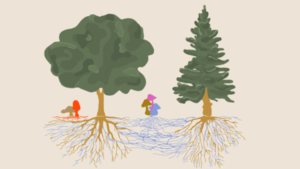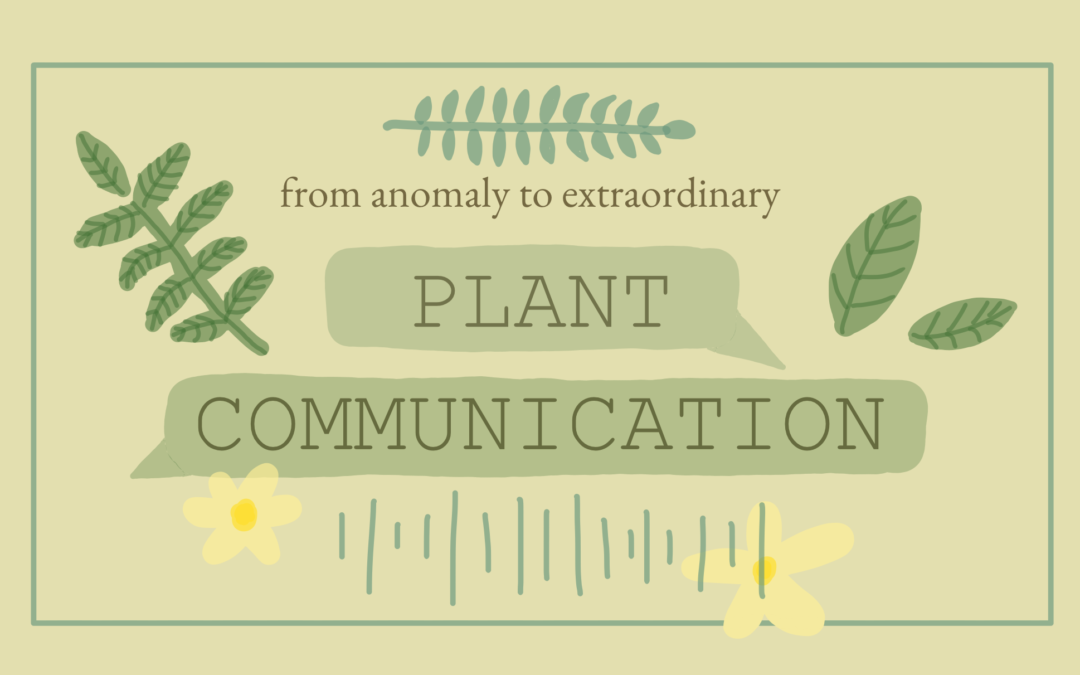Written by: Nabiha Bari
Any classic green thumbs gardener will find themselves talking to their plants, telling them about their day and just creating conversation when one is reminded of their lack of a social life. Maybe you came across the thought that plants really understand your feelings. Good news, research is pointing that plants do have communication skills, just maybe not with you.
After years of debunking plant communication as nothing more than a myth, for the past several years scientists are beginning to discover that they are actually capable of having proper communicating skills with other plants. Unfortunately, the research started with reluctance, as how can a plant communicate when it lacks neurons and a brain? Scientists found their answer below and above ground.
Let’s first start with the basics. Scientists know plants release chemical signals depending on their environment. As the plant lacks a communication system such as neurons and a brain, it is difficult to send signals inside the plant, especially when water is scarce. In response, they instead send the signals either through the air or in the ground to reach the other parts of the plant. Some cases when the chemical signals are released is when the leaves or the shoots get damaged, either from insects or other physical causes. The plant releases chemical plumes as a defence mechanism, which also explains why newly fresh grass has its own special smell.
These fumes are the key to answering the question on how plants can communicate with each other. Two studies were conducted in 1983 where researchers observed infection patterns between willow trees, poplars, and sugar maples. They observed that the trees were left undamaged near the ones that were infected by pests.
Another study was conducted by ex-postdoc Ted Farmer and plant hormone expert Clarence Ryan. They placed damaged sagebrush in airtight jars with potted tomato plants, and results showed that the tomatoes began to produce inhibitors. These inhibitors are responsible for disrupting insect digestion.
Just like crops will communicate with others, trees will also communicate to form

The wood-wide web responsible for material transport
alliances, mainly with the fungal. This large network of exchange of water and nutrients, even sending distress signals, in what is referred to as the “wood-wide web”. In this mutualistic relationship, it allows the transport of water, nutrients, and minerals while the fungi are provided with carbohydrates. Young trees depend on this network as larger trees pump their nutrients into the system, a phenomenon author Peter Wohlleben described as “suckling their young”.
The research found in this field can make such groundbreaking changes to the farming industry. Already, farmers are using the knowledge of allelopathy and competition. Some plants use chemical signals called allelopathy to claim territory and fight other plants. Farmers use this knowledge by planting allelopathic plants near crops to suppress the growth of weeds, for instance, basil near tomatoes.
When scientists and researchers are more open to the fact that plants can essentially “talk” to other plants, crops will begin to withstand disasters such as invasive species, pests, and so much more, essentially leading to improvements in agriculture technology and methods. Sometimes science just needs to embrace the unconventional for the revolution to happen.
Sources:
https://www.quantamagazine.org/the-secret-language-of-plants-20131216/
https://rainbo.com/blogs/blog/the-wood-wide-web
https://www.mcgilltribune.com/sci-tech/plant-communication-250220/
https://newsblogshop.com/science/how-selfish-are-plants-lets-do-some-root-analysis/

